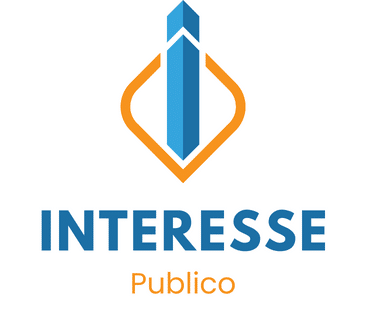What’s the Best Layout for an Energy-Efficient Kitchen with Natural Lighting?

The kitchen is undeniably the beating heart of your home. It’s where meals are prepared, conversations are had, and memories are made. But often, the kitchen’s design doesn’t give much thought to energy efficiency or natural lighting. Yet, creating a kitchen that leverages these aspects can drastically reduce your energy bills and make your space more eco-friendly. So, we invite you to join us as we delve into the world of energy-efficient kitchen design, focusing on the best layout to maximize natural light.
Utilizing Natural Light
The first step towards an energy-efficient kitchen layout understands the importance of natural light. It’s not just about saving on electricity; it’s about creating a more welcoming, bright, and positive atmosphere for you to cook, eat, and socialize.
Also to discover : What Are the Best Privacy Window Treatments for a First-Floor Bathroom?
Incorporating windows into your kitchen design can be a game-changer. Yet, it’s not just about the number of windows but also their size, position, and the type of glass used. South-facing windows will give you the most light throughout the day, while north-facing ones will provide a softer glow.
Moreover, consider installing energy-efficient windows with double or triple glazing. These windows not only allow an ample amount of natural light to filter in but also help in maintaining a stable temperature in your kitchen, conserving energy in the process.
Also to read : How to Integrate a Compact Composting Toilet in a Tiny Home Bathroom?
Skylights are another excellent addition for maximizing natural light. They are particularly useful in kitchens with a limited number of walls, as they don’t compromise on the wall space available for cabinets or appliances.
Optimizing Kitchen Space and Layout
The layout of your kitchen plays a vital role in its energy efficiency. The most efficient kitchen layout follows the work triangle principle. This principle places the refrigerator, the stove, and the sink—the three most used areas—in a triangular layout. This configuration minimizes wasted energy by reducing the need to walk around.
Consider positioning your stove near a window or under a skylight to take advantage of natural light while cooking. Furthermore, use energy-efficient appliances that not only save on electricity but also come in sleek designs that free up counter space.
Go for an open plan layout as it allows natural light to flow freely throughout your kitchen. Besides, it provides you with more flexibility to position your furniture and appliances in a way that maximizes light and space.
Choosing Light Friendly Materials and Colors
The materials and colors you use in your kitchen greatly influence how much natural light gets reflected around the space. Light-colored walls reflect more light than darker ones. So, opt for light shades for your wall paint, cabinets, and countertops.
Materials with a glossy finish reflect more light than matte ones. Stainless steel appliances, for instance, are not only energy efficient but also reflect light well. Similarly, a glossy white subway tile for your kitchen backsplash can significantly increase the amount of light bouncing around the room.
Sustainable and Energy-Efficient Lighting Solutions
Even with the most efficient layout and ample natural light, you’ll still need to supplement with artificial lighting, especially for early mornings, late evenings, and overcast days. Choose energy-efficient LED lights which consume less electricity and last longer than traditional bulbs.
Consider installing task lighting over your work areas such as the stove, sink, and prep zones. This localized lighting approach reduces the need for lighting up the entire kitchen, thereby saving energy. Dimmer switches allow you to adjust the brightness according to your needs, providing flexibility and further energy savings.
Integrating Outdoor and Indoor Spaces
Bridging your kitchen with your outdoor space is another clever design trick to amplify natural light. Consider adding glass doors that lead to your backyard or patio. This will not only flood your kitchen with natural light but also create a seamless flow between your indoor and outdoor spaces.
In summary, planning an energy-efficient kitchen with natural lighting is all about embracing a design that harmonizes efficiency and aesthetics. By considering the layout, material, and lighting choices, you can create a kitchen that not only saves on energy but also makes cooking and dining a more enjoyable experience.
Embracing Eco-friendly Kitchen Appliances and Fixtures
When considering an energy-efficient kitchen layout, it’s crucial to factor in the appliances and fixtures you intend to use. These items play a crucial role in the overall energy consumption of your kitchen. Therefore, selecting energy-efficient appliances can significantly reduce your kitchen’s environmental footprint.
Start by replacing your old appliances with Energy Star-rated ones. These are appliances that have been specifically designed to minimize energy consumption without compromising on performance. For instance, an energy-efficient refrigerator uses about 15% less energy than non-rated models. Meanwhile, energy-efficient dishwashers use less water, reducing both your energy and water consumption.
Next, consider your fixtures. Faucets with a low flow rate can help conserve water. Opt for LED lights for your task lighting needs. These lighting solutions use less energy and last longer than traditional incandescent bulbs. Plus, they come in a variety of color temperatures, allowing you to maintain the warm, inviting atmosphere of your kitchen even after sundown.
Apart from appliances and fixtures, consider incorporating sustainable materials in your kitchen remodel. Bamboo or reclaimed wood can be great options for flooring and countertops, as they are both sustainable and durable. These choices contribute to your eco-friendly kitchen design while adding a touch of natural elegance.
Combining Indoor and Outdoor Kitchen Spaces
Integrating indoor and outdoor kitchen spaces can be another effective way to maximize natural light and promote energy efficiency. An outdoor kitchen not only gives you additional cooking and dining space but also helps decrease energy usage inside the house, particularly during hot weather.
Consider installing large glass doors or bi-fold doors to connect your indoor kitchen with your outdoor space. This kind of design allows more natural light to enter your kitchen and also provides a clear view of the outdoors, making your kitchen feel more spacious and airy.
Moreover, you can use energy-efficient appliances and fixtures in your outdoor kitchen too. Opt for a propane or natural gas grill instead of a charcoal one to reduce harmful emissions. Use energy-saving outdoor lights for evening cooking or dining. You could also consider solar-powered lights, taking your energy saving efforts a step further.
Conclusion
Creating an energy-efficient kitchen with natural lighting is a multi-faceted process that relies on various factors. From the strategic placement of windows and skylights to choosing light-friendly materials and colors, each element plays a part in enhancing the amount of natural light your kitchen receives and its energy efficiency. The layout of your kitchen, the appliances you choose, and even the integration of indoor and outdoor spaces can also significantly impact energy conservation.
Remember, a sustainable kitchen is more than just about being eco-friendly. It’s about creating a space that embodies efficiency, functionality, and style. By adopting these strategies, you’ll not only reduce your carbon footprint but also create a kitchen that’s a joy to cook and dine in.
